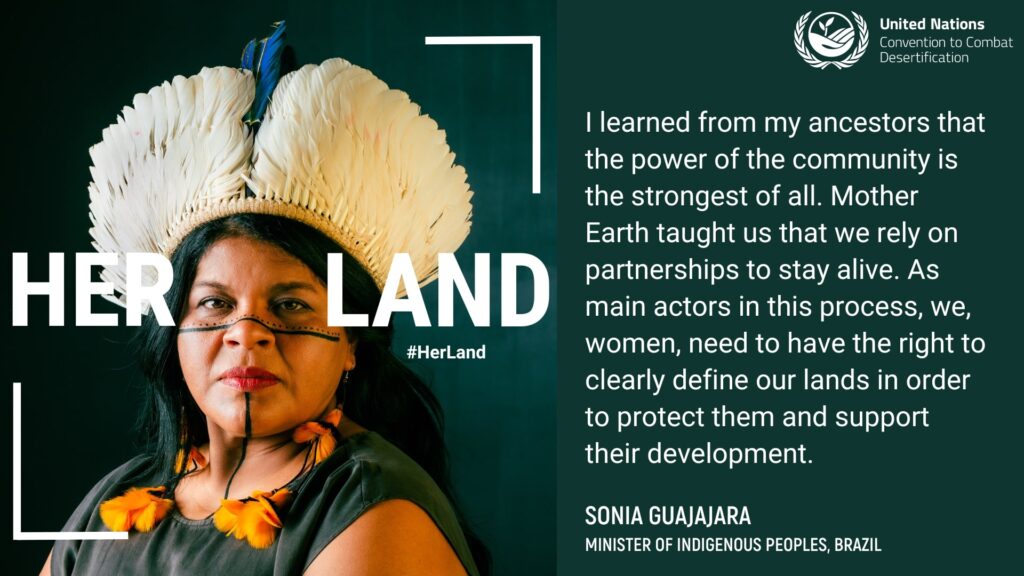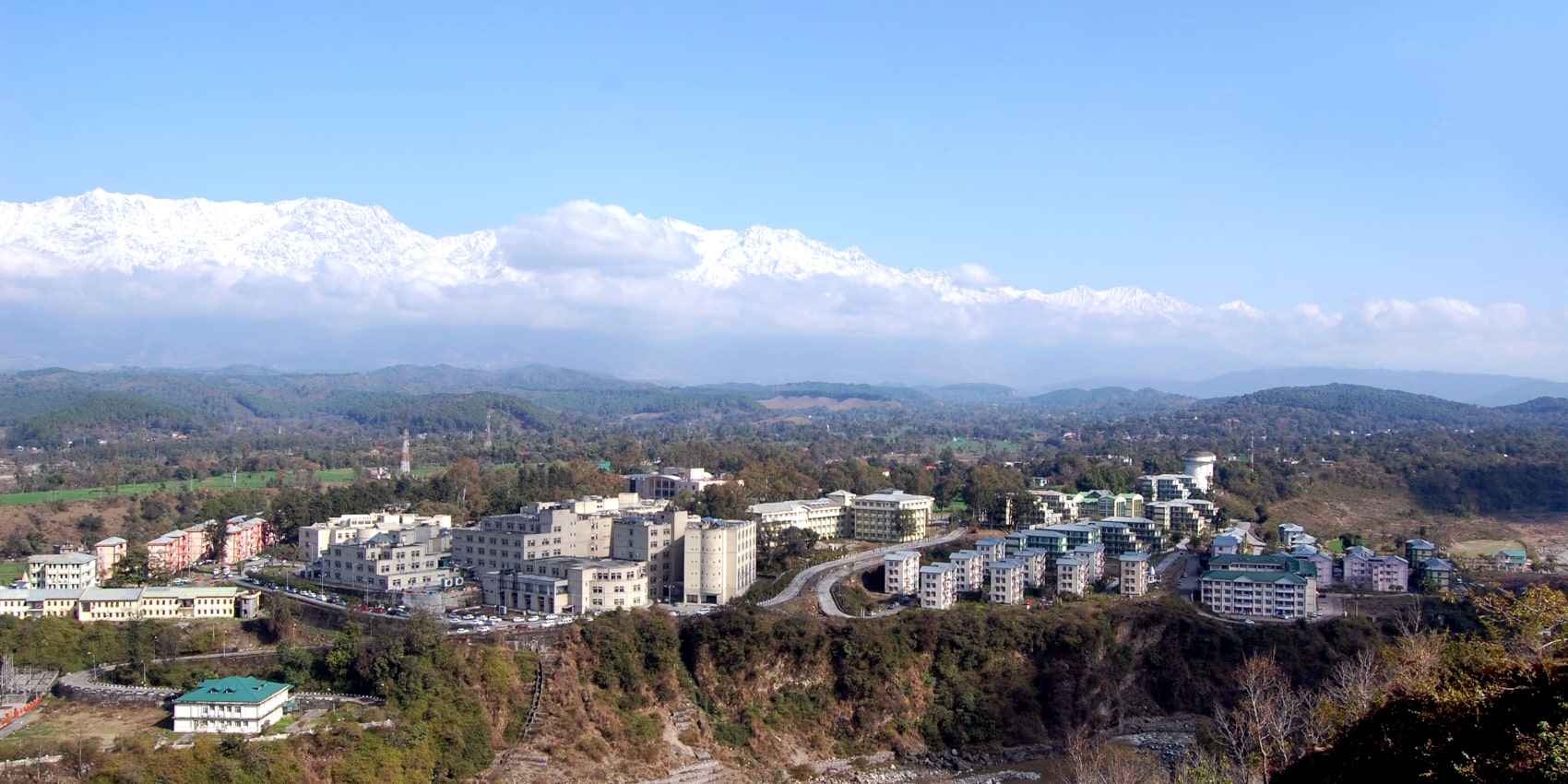Desertification and drought pose significant challenges to sustainable development, affecting both developing and developed nations. The World Meteorological Organization (WMO) estimates that by 2050, droughts may impact more than three-quarters of the global population. With over 2.3 billion people already facing water stress, addressing this issue is crucial.
Women, who hold a vital stake in land health, often lack control over it. They encounter barriers to securing land rights, which limits their ability to thrive and prosper. Discriminatory laws and practices hinder their access to services, resources, and inheritance rights. Furthermore, when land degradation occurs and water becomes scarce, women are disproportionately affected.
This year, the theme for the International Day Against Desertification and Drought is “Her Land. Her Rights.” It emphasizes the importance of investing in women’s equal access to land and associated assets as a direct investment in their future and the future of humanity. It is time for women and girls to lead global efforts in land restoration and building resilience against drought.
Table of Contents
Introduction: World Day to Combat Desertification and Drought
World Day to Combat Desertification and Drought, observed on 17 June each year, aims to raise awareness about the challenges posed by desertification and drought and promote global efforts to combat these issues. It provides an opportunity to highlight the importance of sustainable land management and the need to empower women in this regard.
The Theme: “Her Land. Her Rights.”
The theme for this year’s World Day to Combat Desertification and Drought is “Her Land. Her Rights.” It underscores the significance of women’s equal access to land and associated assets. By investing in women’s land rights, we invest in their future and contribute to the sustainable development of communities and nations.
The Impact of Droughts on Sustainable Development
Droughts have emerged as one of the greatest threats to sustainable development worldwide. While they have historically affected developing countries, their impact is increasingly felt in developed nations as well. According to the WMO, the number and duration of droughts have increased by 29 percent since 2000 compared to the previous two decades. With over 2.3 billion people already facing water stress, addressing the challenge of drought is of utmost importance.
Women and Land Rights: Existing Challenges
Women across the globe face significant barriers when it comes to securing land rights. Discriminatory laws and practices limit their ability to inherit and access services and resources. These restrictions hinder their economic empowerment, making them more vulnerable to the adverse effects of land degradation and water scarcity.
Effects of Land Degradation and Water Scarcity on Women
Land degradation and water scarcity disproportionately affect women. When land becomes degraded, agricultural productivity declines, and water sources dwindle, it is often women who bear the brunt of these challenges. They face increased workloads, food insecurity, and reduced income opportunities, exacerbating gender inequalities and poverty.
Empowering Women for Sustainable Land Management
Empowering women and ensuring their equal access to land and associated resources is crucial for sustainable land management. By removing legal and social barriers, women can actively participate in decision-making processes, contribute to land restoration efforts, and implement sustainable practices. Recognizing and promoting women’s role in land management is a fundamental step toward achieving resilient and thriving communities.
Desertification: A Global Environmental Challenge
Desertification is a pressing environmental issue with far-reaching consequences. It refers to the persistent degradation of dryland ecosystems caused by climate change and human activities. Unsustainable farming practices, overgrazing, deforestation, and clear-cutting of land contribute to the transformation of once fertile land into deserts.
Understanding Desertification and Its Causes
Desertification is not solely the expansion of existing deserts but rather the deterioration of dryland ecosystems. Human activities play a significant role in accelerating this process. Unsustainable agricultural practices deplete soil nutrients, mining activities disrupt ecosystems, and deforestation strips the land of vital tree and plant cover. The resulting soil erosion, exacerbated by wind and water, further degrades the land and transforms it into desert-like conditions.
The Devastating Impact of Desertification on Nature and Population
Desertification has severe implications for biodiversity, eco-safety, poverty eradication, socio-economic stability, and sustainable development. Drylands are already fragile, and as they degrade, the consequences for people, livestock, and the environment become increasingly devastating. It is estimated that around 50 million people may be displaced within the next decade due to desertification.
Displacement and Arable Land Degradation
Arable land degradation exacerbates the problem of desertification. Overpopulation in underdeveloped countries leads to increased pressure on drylands for agriculture. These marginal regions become overgrazed, the land becomes exhausted, and groundwater is overexploited. This negative cycle perpetuates poverty and environmental degradation.
Actions to Reduce Desertification
Addressing desertification requires concerted efforts at various levels. Several strategies can contribute to mitigating and reversing the process:
- Reforestation and Tree Regeneration: Planting trees and regenerating forests can help combat desertification by stabilizing soil, improving water retention, and restoring biodiversity.
- Water Management Strategies: Effective water management, including water-saving techniques, rainwater harvesting, and desalination, can alleviate water scarcity in dryland regions.
- Soil Conservation and Enrichment Techniques: Implementing practices like sand fences, shelter belts, and windbreaks can protect the soil from erosion. Enriching the soil through planting and mulching helps retain moisture and increase fertility.
- Farmer-Managed Natural Regeneration (FMNR): FMNR involves selective pruning of shrub shoots, allowing native trees to sprout and grow. This technique helps restore degraded lands, improve water retention, and reduce evaporation.
The United Nations Convention to Combat Desertification (UNCCD)
To address the challenges of desertification and drought, the United Nations Convention to Combat Desertification (UNCCD) was established in 1994. It is the only legally binding international agreement that links environment and development to sustainable land management. The UNCCD aims to mobilize global action and supports countries in developing national action plans to combat desertification and reduce the impact of drought.
The Role of UNCCD in Sustainable Land Management
The UNCCD and its 197 parties, including 169 affected by desertification, work collaboratively to maintain and restore land and soil productivity. The convention emphasizes the importance of sustainable land management and provides support to drought-prone countries. Through capacity-building, knowledge sharing, and international cooperation, the UNCCD aims to combat desertification and promote sustainable development.
World Day to Combat Desertification and Drought: Promoting Action
World Day to Combat Desertification and Drought serves as a platform to promote awareness and mobilize action. It encourages governments, organizations, and individuals to implement sustainable land management practices, empower women in land-related matters, and support initiatives that restore degraded lands. By working together, we can combat desertification, ensure the resilience of ecosystems, and create a sustainable future for all.
Resources






Conclusion
The World Day to Combat Desertification and Drought, with this year’s theme “Her Land. Her Rights,” highlights the importance of women’s equal access to land and associated assets. Addressing desertification and drought requires a multifaceted approach that empowers women, promotes sustainable land management practices, and fosters international cooperation. By safeguarding our land resources, we can build resilient communities, protect biodiversity, and achieve sustainable development.
Frequently Asked Questions (FAQs):
What is desertification?
Desertification refers to the persistent degradation of dryland ecosystems caused by climate change and human activities. It involves the transformation of once fertile land into deserts due to factors like unsustainable farming practices, deforestation, and soil erosion.
Why is women’s equal access to land important?
Women’s equal access to land is vital for sustainable land management and inclusive development. It empowers women economically, promotes gender equality, and enhances community resilience in the face of land degradation and water scarcity.
What are the main causes of desertification?
Desertification is primarily caused by human activities such as unsustainable agriculture, overgrazing, deforestation, and soil erosion. Climate change also plays a significant role in exacerbating desertification processes.
How does desertification affect biodiversity?
Desertification has detrimental effects on biodiversity. It disrupts ecosystems, leads to habitat loss, and threatens the survival of various plant and animal species. Protecting and restoring degraded lands is essential for conserving biodiversity.
How can individuals contribute to combating desertification?
Individuals can contribute to combating desertification by practicing sustainable land management in their daily lives. This includes water conservation, planting trees, supporting reforestation initiatives, and raising awareness about the importance of land restoration and protection.
























